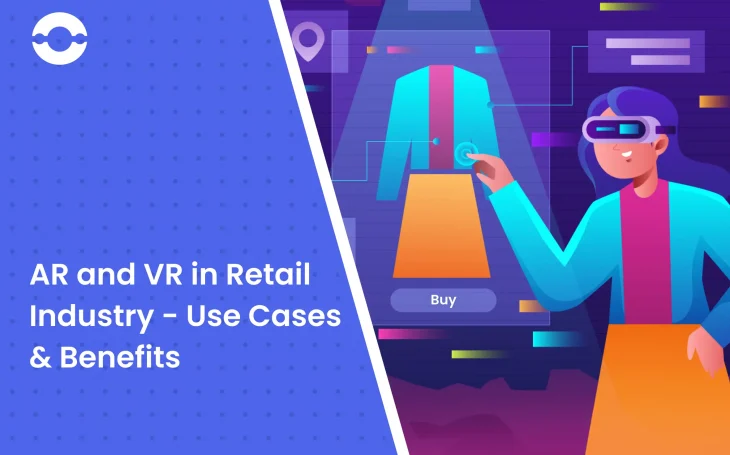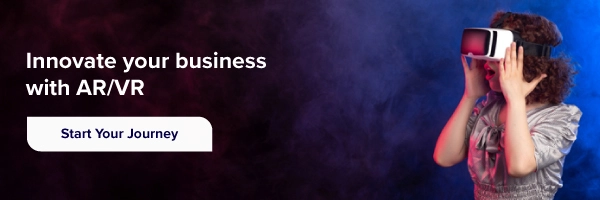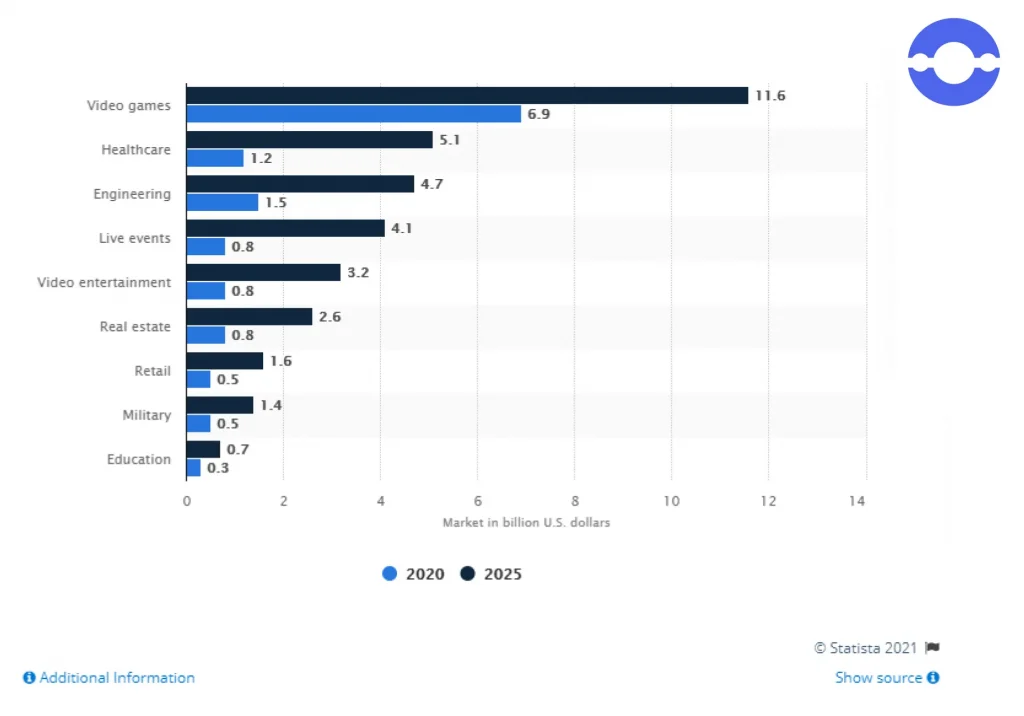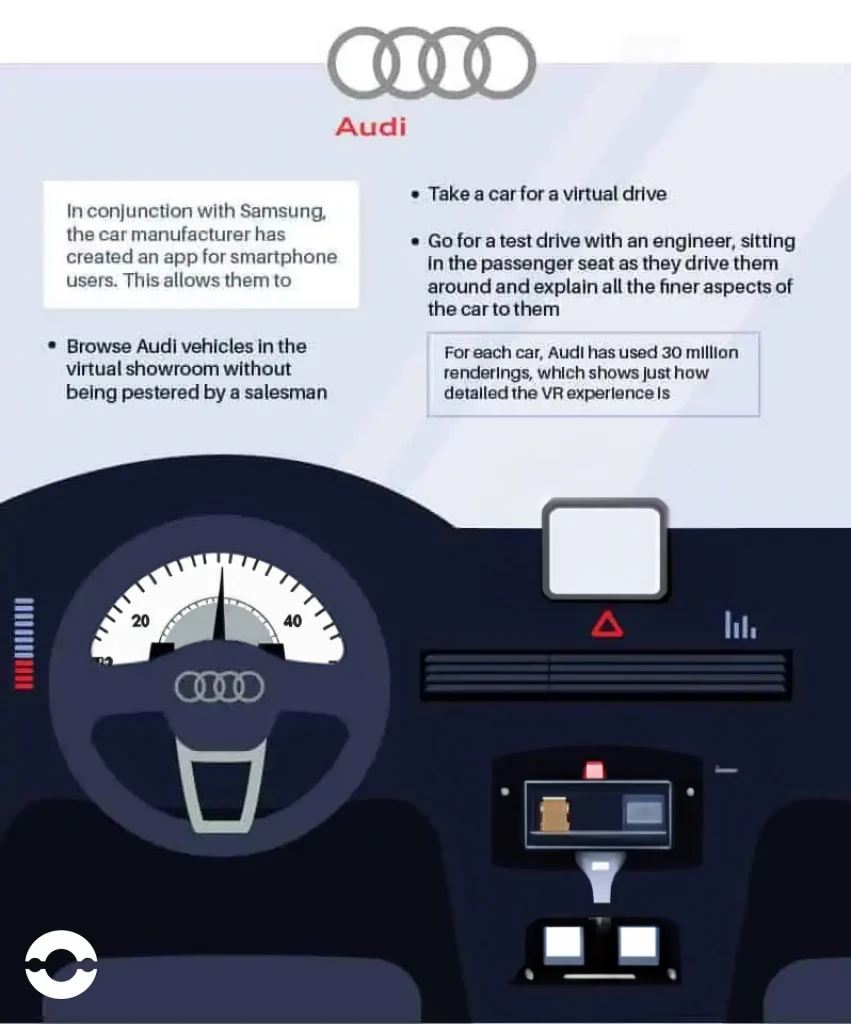
Are you a retailer looking to revolutionize your store, and selling and marketing techniques? If yes, then AR and VR are your answers.
AR and VR in the retail industry have been transforming the way retailers are selling and buyers are buying goods and services. With more immersive and interactive 3D experiences, shopping has never been a more informative, aware, and fun experience.
So, let’s just quickly start with the basics and then look at the use cases and benefits of AR and VR in the retail industry.
What is AR?
Augmented Reality or AR is an emerging technology that combines the real and virtual world to offer a user an interactive experience.
This experience is delivered through digital visual elements, sounds, and other sensory stimuli. It enhances the real-world environment with computer-generated content.
Pokemon Go, an interactive and immersive game, is one of the most popular examples of AR technology.
What is VR?
Virtual Reality or VR uses computer modeling and simulation to allow users to enter an immersive and interactive environment through VR headsets or glasses. The users get to interact with an artificial 3D visual or other sensory environment.
It is said that VR is the technology behind the metaverse and has a bright future.
Also read: AR And VR Advantages And Disadvantages
AR/VR is extensively used in the retail industry. Let’s look at some of the AR/VR in retail examples, followed by the benefits it offers to the industry.
AR/VR use cases in retail
AR/VR in the retail industry is being used to enhance customer experience and increase sales. With traditional methods of sales used by retailers, customers were not able to have a comprehensive overview of the product.
However, the inclusion of AR/VR technology has allowed retailers to offer an immersive experience to their customers to enhance engagement and boost sales.
Nike, the global athletic footwear and apparel brand utilizes AR and VR technology in its physical stores to offer a superior customer experience.

As a result, customers can scan items such as shoes, clothing, or accessories to view product details. They can even enter a VR world to experience the multiple or various steps in the brand’s supply chain, and deeply understand how and where items are being manufactured or made.
AR and VR in e-commerce and the retail industry have made their way into the most popular and sought-after brand stores or showrooms.

Forecast size of the augmented and virtual reality (VR/AR) market worldwide in 2020 and 2025, by segment (in billion U.S. dollars)
Thus, there are multiple AR/VR use cases in retail. Some of them are:
1. Modern in-store journey
Brick-and-mortar stores have been elevating the customer experience through the use of virtual reality.
The stores are engaging customers with an immersive, and comprehensive experience of products that are available and even for the products that are not available in the stores at the time of the visit.
For example, WatchBox, a luxury watch retailer, leverages AR technology to enable customers to try on various sizes of a watch and pick out the most suitable ones. The brand further ensures that the chosen one looks like the perfect fit for the wrist.
The virtual try-before-you-buy is helping a lot of retailers enhance their customer service and experience.
Due to the space constraints in a brick-and-mortar, a lot of products could and should not be stored. However, this should not restrict the options offered to customers or opportunities for sale. Hence, a VR headset is an excellent way to showcase products with different configurations or enable customers to customize their products by having a look at different detailing possibilities.
Back in 2017, Audi leveraged the Oculus Rift headset, a virtual reality headset co-developed by Lenovo Technologies and Oculus VR, to allow customers to see their car in 3D as well as customize it as much as they want.

This way was more engaging and immersive than the traditional way of choosing the upgrades from a list on the desktop or computer screen. This allows customers to interact and experience the product with the new ways of the digital era.
It is also an effective and affordable marketing and engaging tactic for retailers to implement to boost footfall and sales.
A shoe company called Toms successfully used VR in over 100 of its stores across the globe. They had put VR headsets in their stores that showed a promotional video. This video offered customers to donate a pair of shoes for every pair they buy to the Peruvian children.
2. In-store navigation
Retail stores often equip their offline sales locations with specific AR markers. These markers resemble normal stickers and help in identifying the customer’s location/position within the store using location-based services such as GPS and visual recognition. Then using the AR-based mobile app, a customer receives the product’s whereabouts as well as the instructions to reach a particular store department on his/her device.
AR overlays digital information such as directional arrows, product details, offers, promotions, etc., onto the real environment using the device’s camera.
This simplifies the store experience for them as with traditional retail practices, a customer could find it difficult to navigate through big physical stores and find the exact thing he/she has been seeking.
With in-store navigation using AR, customers can locate their requirements easily through real-time directions, and product information. This use case of AR/VR in the retail industry hence enhances the customer experience as they save time and reach their products faster than usual.
It further helps businesses to better engage customers and promote specific products or offers as they can leverage AR to push promotions, discounts, or offers as per the customer’s location or preferences, purchase history, or loyalty status. Customers can get personalized recommendations and offers in real time as they explore the store.
For example, Hyper AR, an indoor maps and AR navigation app enables shoppers to compile their shopping lists and get augmented reality-guided navigation for productive store routing.
This allows the customers to feel more in control of the shopping situation, and the staff to offer a personalized experience and at the same time, focus on inventory tasks and enhance the overall shopping experience.
Also read: AR/VR Tools: Choose the Right Tools for Immersive Technology
3. AR shopping assistants
Retail stores often struggle with service gaps caused by to shortage of staff in comparison to the number of customers seeking assistance. This translates into a bad customer experience.
However, AR plus AI shopping assistants work as virtual guides for the shoppers/customers and help retail businesses overcome issues of staff shortages or unattended customers. These assistants engage with customers actively and allow them to streamline their shopping choices/options by providing product recommendations, answering queries, and offering styling tips.
Shoppers can integrate these assistants into their mobile apps or in-store devices and make more informed purchasing decisions with the help of these assistants.
After pointing their smartphones or AR-enabled devices at a product, customers can view digital information of the product overlayed onto the real-world view by the AR assistants. This information generally includes product details such as prices, customer reviews, colors and sizes available, etc. These assistants also facilitate virtual try-on.
Without manual intervention, the customers are able to make the most optimal choices with the help of these assistants.
4. Smart store mirrors
Retail stores have also added smart products to their physical stores to further enhance the customer experience through AR and VR in the retail industry.
Smart store mirrors are devices equipped with special sensors. They allow customers to ‘try on’ outfits or accessories without actually putting them on.
AR technology overlays virtual or digital images of clothing items or accessories onto the shopper’s reflection in the mirror. Customers can see how the clothes or accessories fit on a screen and even change colors/models/patterns to explore different options using the built-in AR features.
These smart mirrors can also analyze the shopper’s body shape and make suggestions about appropriate sizes, colors, or accessory items that would complement the clothing, based on their shopping bag or choices. This helps businesses to upsell and cross-sell as well.
At the same time, customers are able to skip trial room queues, try on multiple clothes without physical activity, and get a personalized experience.
Additionally, these mirrors can display product details, such as pricing, and availability. They may even facilitate instant checkout through integrated touchscreens or mobile applications, further enhancing customer experience.
Moreover, smart mirrors can also capture customer data such as interactions, tastes, preferences, trending styles, etc., and display targeted marketing messages, offers, promotions, or ads to customers. The same data is also used by retail businesses for inventory management, product placement as well as creating targeted marketing strategies.
Uniqlo, a Japanese clothing retail chain has been leveraging the smart mirror technology in their stores across the globe.
Sephora, a global beauty brand has also been using AR filters to show various products to their customers with different skin tones, textures, pigmentation, etc., and boosting sales. This filter could be used both in stores and on the app at home.
A Snapchat report stated that 35% of global consumers would go out of their way to visit a store that had at least one advanced technology feature such as smart mirrors and interactive screens. Additionally, 33% of people in the survey would use to try on clothes in stores they already visit.
5. Engaging store window displays
Retail stores leverage AR to enhance their store window displays and make them catchier and more interactive. The displays are out there for customers to engage with, receive product information, and even avail themselves of promotional offers and deals, all through their smartphones.
Customers can also virtually try on what’s being displayed on the window screen. Passerby can virtually try on clothing and accessories without even keeping a foot inside the store. The digital display allows customers to see themselves in virtual items superimposed on their reflection, offering them a fair idea of how the products would look on them.
They can also get additional product details such as features, reviews, pricing, etc., displayed by pointing their smartphones at the window display to scan a QR code or using an AR app.
That’s just not it. AR technology allows businesses to tell their brand story more interestingly and interactively through these displays.
Customers can also interact with the display using gestures or smartphone controls to play games or engage in contests to unlock discounts, deals, rewards, points, and offers. Thus, AR also allows for the incorporation of gamification elements into the store display windows.
The displayed on these interactive windows could be remotely updated in real-time, ensuring that the display remains engaging and relevant with changing times. Businesses also use these smart windows to showcase virtual versions of exclusive as well as limited-edition products that are yet to be stocked in stores. This increases the chances of online purchases or in-store inquiries.
6. AR/VR training for employees and warehouse management
AR and VR in the retail industry also help employees to take training in a digitalized manner. By just pointing the smart device’s camera to the store shelf, they can get prompts about what needs to be done next and how. This is one digital way of learning.
Another digital way of learning is through VR glasses. These glasses stimulate communication with a customer.
This allows the sellers/employees to talk to customers and sell more confidently as the system generates a script with keywords given as hints. This creates a flow of thought and a coherent speech and allows sellers to sound more persuasive.
Walmart, for example, has been using VR since 2017, for its employee training purposes. The retail giant reported that over 1 million retail associates and managers are equipped with immersive training and skills. The staff has improved knowledge and skill retention, and there’s higher satisfaction. At the same time, there is a considerable reduction in training time.
‘When we used the Oculus Rift VR headset in the classroom, we noticed an increase in test scores between 5% and 10%. We are starting to replace some global learning management-system modules that can take 30 to 45 minutes and transitioning this to a 3- to 5-minute module in the virtual reality environment.’, said Andy Trainor, the company’s VP of learning.
Further, the AR systems also allow for real-time barcode scanning, indoor navigation, and frictionless data integration with the warehouse management system. The employees could thus quickly and easily check prices as well as product location, and management stock of goods and inventory.

AR systems produce navigational arrows upon scanning of the barcode which allows employees to find the right items for customers quickly in a chaotic warehouse.
Not just that, these technologies also helped some brands with merchandising. Kellogg used a VR solution to find the best place for its newly launched Pop-Tarts Bites product on the store shelves.
A life-like virtual supermarket with aisles, shelves, and products was created. The target group participants wearing VR headsets integrated with an advanced eye-tracking analytics solution, “shopped” in this virtual setup. As per Kellogg’s research and analysis, the company witnessed an 18% increase in sales during the testing period.
7. Interactive instruction manuals and product catalogs
Through interactive manuals and product catalogs, customers can just scan the product QR codes and go on a virtual tour to learn about the product comprehensively. They can access digital information, animations, or videos that are overlaid on the real-world object via the smart device’s camera.
This manual gives information regarding the working, installation, and different modes of the product. These types of catalogs or manuals are especially popular in household appliance retail shops.
Sometimes AR markers or codes are embedded in product packaging as well. Upon scanning with AR-enabled devices, customers can view detailed information about the product such as specifications, directions to use, customer reviews, etc.
AR and VR in the retail industry facilitate the visualization of products in the real environment through interactive printing and packaging. The AR-enabled features/solutions allow for more informed buying and selling. Pop-up cards, product demonstrations, etc., are all making shopping an immersive, and informed experience.
8. Home in-store experiences
Retail shops have also started offering customers the option to ‘try-before-you-buy’ prior to visiting the offline store. Customers can virtually try the product sitting at their homes and visit the offline store later to buy it.
They can virtually test furniture or home decor before purchasing a VR simulation. They can further go on virtual test drives of their dream cars sitting at home and much more.
This along with the immersive instruction manuals allows the customer to visualize products in their own spaces, consider all the points, and make a buy that is well-thought. And this buy could be made on his/her time.
Now that we have seen the AR/VR use cases, let’s look at the benefits that come out of them in the next section.
AR/VR in retail- Benefits
AR and VR in the retail industry have multiple benefits. Some of these perks are:
1. Elevated customer experience
AR and VR in the retail industry enhance the overall customer/shopper experience. Through interactive and immersive product demos and manuals, the customers make an informed decision that was not possible earlier.
Furthermore, the virtual tours allow customers to place the product before buying. The AR features enable them to try clothes or accessories on and explore different options without the physical effort of actually trying them on.
In fact, as per a Forbes article, around two-thirds (61%) of the 1,000 U.S adults said that AR has influenced where they shop, in a survey.
Also read: Future of Digital Transformation – Key Trends
2. Increased brand awareness
AR and VR in the retail industry or stores enhance brand image and awareness.
For example, Balenciaga, the global luxury fashion brand, created and released a VR video game named Afterworld: The Age of Tomorrow, to promote their autumn/winter 2021 collection. This game was made available on their official website.
By just creating an avatar donning Balenciaga’s latest clothing, players were able to navigate a futuristic landscape and achieve multiple simple quests. Upon the competition of the game, some participants shared their impressions on social media, enhancing Balenciaga’s brand awareness.
While these technologies increase brand awareness, they also create a loyal army of customers. When the customers feel more informed about their purchase, their trust increases and so do their visits to the store.
AR and VR in the retail industry have made the entire shopping experience more informed and nuanced for buyers.
In fact, as per an article by The Wall Street Journal, businesses that offer branded AR experiences are 41% more likely to capture the attention of consumers than those that do not provide such experiences.
3. Enhanced product visualization
Product visualization has been made possible through AR and VR in the retail industry. Customers can view products virtually, try on clothes/accessories, visualize furniture in their homes, and see how different makeup products will look on them before taking the big monetary leap.
4. Increased personalization and engagement
AR and VR help retailers implement personalized and targeted marketing as well as experience. Through 3D graphic-rich content, retailers offer a more immersive and engaging experience to their customers.
Not just that, AR tools allow customers to customize their products to their liking and shop more. This creates a unique and personalized shopping experience for them and boosts the user’s buy rate from the store. This even makes the customers feel special and gives them a solid reason to visit you again and again.
For example, BMW’s AR experiences allow shoppers to visit the physical showrooms and customize cars with different colors or styles through their smart devices such as tablets or phones. Alternatively, they can even put on VR goggles and experience what would it feel like to drive the cars, helping them make a more informed decision.
Further, with in-store navigation through AR and virtual tours from the comfort of their homes, customers tend to interact, immerse, and engage more with the retail stores.
In fact, 40% of people are ready to pay more for a product if they get to experience it through AR first. All this boosts present sales as well as future business.
5. Fewer returns
With increased customer satisfaction, the returns rate is bound to fall.
With AR and VR in the retail industry, the items bought are thought-through and well-understood. Further with personalization of the shopping journey, the customers are more satisfied with whatever they have chosen for themselves, and the entire experience is more likely to be positive.
For example, during the pandemic, Apple brought their physical retail stores to buyers. Using AR technology, the stores were brought home in order to showcase their products.
Shoppers had the option to use AR Quick Look for new iPhone or iMac models. This allowed shoppers to have an idea of what the products would look like in their hands, space, or real environment.
This made the buyers doubly sure of the product and their choices and helped them move forward with their purchase. This ensured that there were fewer dissatisfactions and hence, returns.
Therefore, using AR and VR in stores leads to more product awareness, fewer disappointments with purchases, and thus, fewer returns. As a result, retailers save money with the reduction in costs associated with returns.
Plus, the experience offered by retailers through AR and VR becomes unique and differentiating from the competitors. This boosts sales and initiates a positive journey.
6. Enables new marketing methods
AR and VR in the retail industry provide engaging, intuitive, and fun content for digital marketing. The two emerging technologies add creativity and motion to the ads and make them extremely attractive for engagement, which was not possible with the traditional ads.
With more interactive and interest-provoking displays or digital ads, customer engagement is expected to be greater.
Conclusion
These were some of the key use cases and benefits of AR and VR in the retail industry.
Using AR/VR in retail, businesses are able to streamline their operations, offer a more engaging and innovative experience to customers, and make their marketing efforts more targeted and interactive. While customers can make more informed and conscious choices around spending their bucks. Both retailers and shoppers and shoppers stand to gain from the incorporation of AR/VR in retail.
This blog thus highlights how AR and VR in the retail industry have made the entire shopping experience an engaging and immersive journey that is almost unforgettable. From the creative and mind-blowing 3D displays outside of stores to the fancy and modern AR and VR equipment inside, these two emerging technologies have changed the way customers interact with products and shop, driving sales and business growth.
With global AR in retail market size projected to grow at a CAGR of 41.4% from 2022 to 2031 and global VR market size expected to grow at a CAGR of 27.5% from 2023 to 2030, the increased usage of these emerging technologies would lead to enhanced customer satisfaction and multiple breakthroughs.
Using AR/VR, retailers can bridge the gap between online and offline shopping experiences. Thus, in these times driven by technology, it is important for all retail businesses to invest in these technologies and enjoy their benefits.
While we know that it might get overwhelming to understand where and how to start, we are here to help you find the most reliable partner for your AR/VR exploration.
BigOh is a leading name in the technology industry known for its interactive, practical, and innovative AR/VR solutions. From AR/VR app consultation to design, development, testing, and maintenance of multiple types of AR/VR apps such as sensors-based, location-based, face and gestures recognition platforms, etc., we offer end-to-end services!
Visit us, learn more about our services, and get in touch with us today to get your retail business to new heights!
Latest Post: VR In ECommerce – Use Cases And Benefits




